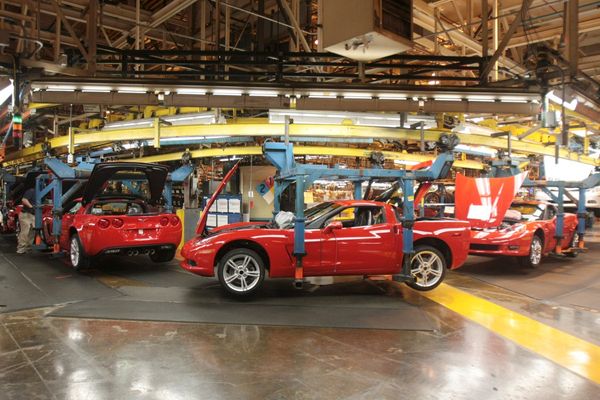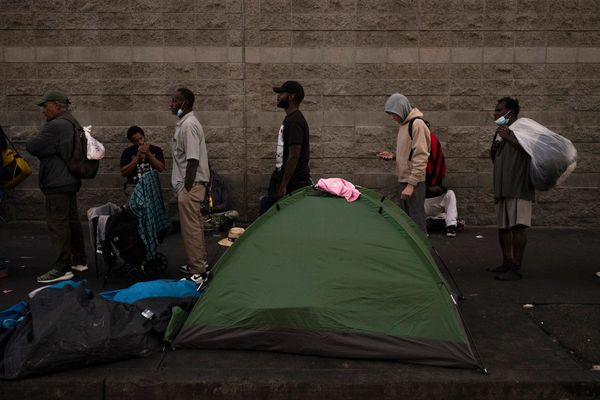Riddled with contradictions, the Indian economy neither offers conclusive evidence of a stellar performance nor of a collapse. Evaluating economic performance could provide challenges for both the government and the Opposition.
As the country braces for the next general election, claims and counter-claims on the performance of the economy have been a prominent theme for discussions. The government, to establish the superiority of economic management in the last decade, often highlights three aspects of performance.
First, the size and growth of gross domestic product (GDP), which is projected to become the third largest in the near future and has registered high growth rates in comparison with other emerging economies (at least in the past few quarters). Second, the number of people who have moved out of poverty, which it claims is the highest in recent times — attributed to the prudent implementation of inclusive policies. Third, the soaring stock market indices, which it claims is opening up avenues for entrepreneurship and wealth creation. The numbers regarding the second claim are dubious with little scope for independent analysis. It is one that has produced multiple narratives, often contradicting the tall claims of growth and wealth creation.
‘Shining India’
Apart from GDP growth, a number of high frequency indicators are used to buttress the argument of the economy moving to a higher growth trajectory. Passenger car sales, domestic air passenger traffic, increase in demat accounts, UPI transactions and the sale of high-end mobile phones and luxury homes are indicators often used to highlight the outcomes of sustained growth. These have helped to create a ‘premiumisation’ narrative — that is, consumers are now buying products that are more expensive and the emergence of this class of consumers is an indication of the upward income mobility of sections of the population that have gained from higher economic growth. It is true that some of these indicators mentioned above have seen an upward trend. For example, passenger car sales from April 2023 to January 2024 clocked 3.42 million units. If the same trend continues, total sales by the end of this financial year might clock an all-time high of 4.1 million units. Interestingly, the average selling price is ₹11.5 lakh, up from ₹7.65 lakh in 2018-19, a 50% increase. Similarly, the number of domestic air passengers is set to cross an all-time peak of 141.6 million recorded in 2019-20. The financial sector has also recorded a tremendous increase in volumes and values. Investments in mutual funds through systematic investment plans crossed the ₹18,000 crore mark last month. The number of demat accounts increased from 39.4 million in December 2019 to 143.9 million in January 2024. These growth indicators, however, co-exist with numerous indicators that reveal the distressed side of the economy, which is a feature of a dual economy.
Dual and divergent
Economic dualism, in terms of a broad definition, refers to the coexistence of two or more economic systems. A dual economy is formed by the coexistence of subsistence agriculture and cash production of industrial goods for the international market. The dual nature of the Indian economy emerges when we examine another set of indicators alongside much-acclaimed growth performance. The persistence of dualism has forced the government to resort to two major welfare policy initiatives.
First, in November 2023, the government extended the free food grain distribution programme (under the Pradhan Mantri Garib Kalyan Anna Yojana) for five years, beginning from January 1, 2024 to cover 81.35 crore beneficiaries in the country. According to the United Nation’s world population dashboard, India’s population is now a little over 1,428 million. If 813 million people are to avail free food grains from the government, it constitutes 57% of the population. When the economy grows and such a large share of the population depends on free food grains from the government, it indicates that the benefits of growth are not trickling down to the other half of the economy, where dualism persists.
Second, in an era of high growth, the demand for work under the Mahatma Gandhi National Rural Employment Guarantee Scheme (MGNREGS) has been the highest. The growth of rural jobs under MGNREGS shows a 11% increase in this fiscal until December, compared with the corresponding period in the previous financial year. Between April-December 2023, 231.34 crore person days were generated across all States. This is higher than the number of person days generated between April-December 2020 when COVID-19 and the lockdown caused a spike in the unemployment rate and increased demand for MGNREGS.
While official data for the period 2022-23 claims a decline in unemployment, it also shows that 45% work in the agriculture sector. In another instance, the response in Haryana and Uttar Pradesh to advertisements for skilled workers for jobs in war-hit Israel highlights the intensity of a latent unemployment crisis.
The dual structure of the economy is stark when we examine rural incomes. Agriculture and non-agriculture rural real wages grew at 8.6% and 6.9% per annum during 2019-10 to 2013-14. However, during 2014-15 to 2018-19, growth of real farm and non-farm wages decelerated to 3.3% and 3% per annum. In the last five years, 2019-20 to 2023-24, the annual growth rate of real rural wages has become negative for both agriculture (-0.6%) and non-agricultural (-1.4%) workers. The slow growth of rural incomes and its role in perpetuating dualism is corroborated by the level of indebtedness among households. According to the All India Debt & Investment Survey, the incidence of indebtedness was about 35% in rural India, that is, 40.3% among cultivator households and 28.2% among non-cultivator households. While it is 22.4% in urban India , that is 27.5% self-employed households and 20.6% other households.
The surge in demat accounts has to be seen in line with the explosive growth in stock options trading. According to a Bloomberg report, in 2023, Indian investors traded a whopping 85.3 billion options contracts. No other country trades such humongous volumes of options contracts annually. In 2023, the United States traded 11.2 billion options contracts, while Brazil traded only 2.4 billion. The surge in options trading among retail investors is a matter of concern as instead of following conventional methods such as investing in stocks and mutual funds for long-term wealth building, diving into speculative trading. More worrisome is the fact that the average time an Indian trader holds an option is less than 30 minutes, according to data from mutual fund provider Axis Asset Management Co. According to a study by the Securities and Exchange Board of India (January 2023), 90% of active retail traders lose money trading options and derivative contracts. Further, investors collectively lost nearly ₹44,848 crore in the year ending March 2022.
SDG targets
During the period 2024-29, India is expected to cross the $5-trillion mark and is likely to become the third largest economy in the world. However, by 2030, the world will be approaching the deadline to meet the Sustainable Development Goals (SDG). Given the present scenario, a number of countries are likely to be falling behind in achieving the targets. The extent of India’s slippages in achieving SDG targets would expose claims of the growth and size of the economy. The Janus-face of the economy needs to show at least a tendency towards convergence by then.
M. Suresh Babu is Professor of Economics at IIT Madras. The views expressed are personal







